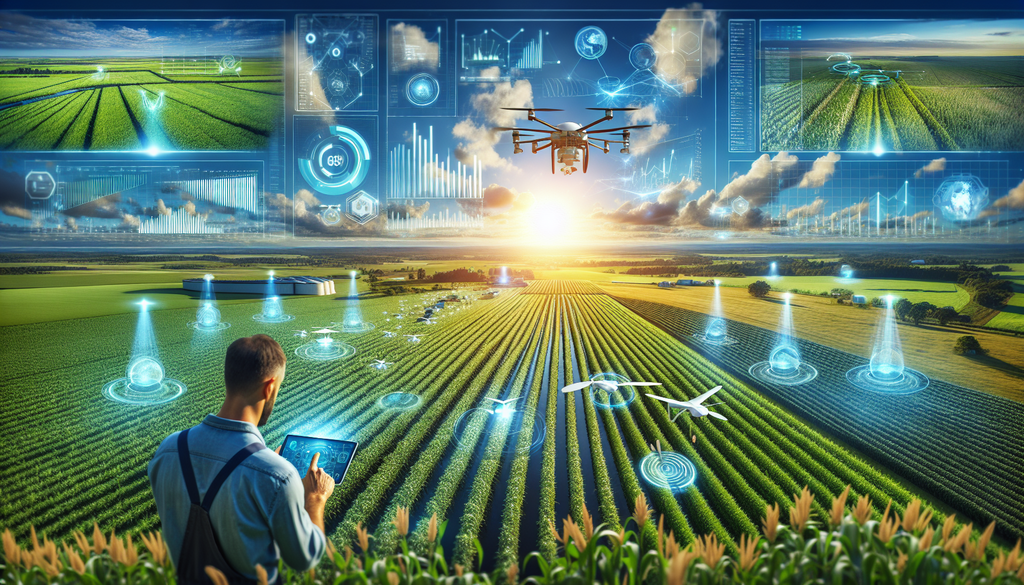In the evolving world of agriculture, data analysis has emerged as a powerful tool for enhancing crop efficiency. As the global population continues to rise and the demand for sustainable food production accelerates, farmers increasingly turn to smart farming techniques powered by sophisticated data analytics. This blog explores how leveraging data can lead to significant improvements in crop yield, resource management, and overall farm productivity.
The Evolution of Smart Farming
Smart farming represents a transformative shift in agricultural practices. Traditional farming methods often rely on the farmer’s intuition and experience, making it challenging to optimize production accurately. The integration of technology, particularly data-driven solutions, is revolutionizing this field by providing actionable insights that help farmers make more informed decisions.
The Role of Data in Agriculture
Data in agriculture can take many forms and sources, including:
- Sensor Data: Soil moisture, temperature, and nutrient levels can be monitored in real-time using IoT sensors.
- Weather Data: Historical and predictive weather information are crucial for planning planting and harvesting times.
- Yield Data: Analyses of past performance help estimate future yields and identify potential issues.
By collecting and analyzing these types of data, farmers can pinpoint optimal planting times, effective irrigation methods, and necessary nutrient applications tailored to specific crops and conditions.
Benefits of Data Analysis in Smart Farming
1. Increased Crop Yields
One of the most compelling advantages of data analysis in smart farming is the ability to significantly increase crop yields. By understanding their crops’ unique needs through data, farmers can:
- Optimize planting schedules based on weather patterns.
- Implement precision agriculture techniques to apply inputs such as water, fertilizers, and pesticides only where and when needed.
- Utilize crop rotation and diversification strategies based on yield data to improve soil health and crop productivity.
2. Efficient Resource Management
Smart farming not only increases yield but also ensures that resources are utilized efficiently. The use of data analytics allows farmers to:
- Monitor irrigation needs remotely to prevent over-watering or under-watering.
- Reduce waste by applying fertilizers and pesticides precisely according to crop needs.
- Lower energy costs by optimizing the use of machinery and equipment.
Such precision helps in lowering operational costs while promoting environmental sustainability.
3. Predictive Analytics for Better Decision-Making
Predictive analytics plays a vital role in smart farming. By examining historical data trends, farmers can forecast outcomes related to:
- Pest and disease outbreaks, enabling timely interventions.
- Market demand shifts, giving farmers a competitive edge when negotiating prices.
- Crop performance based on varying climatic conditions to adapt strategies proactively.
Implementing Data-Driven Strategies
Transitioning to data-driven farming requires a thoughtful approach. Here are some key steps for implementing effective data analysis strategies:
1. Invest in Technology
Farmers should invest in tools and technologies such as sensors, drones, and advanced software platforms tailored for agricultural data collection and analysis. For example:
- Drones: Capturing high-resolution images for field analysis.
- GIS Software: Mapping data for spatial analysis of crops and fields.
2. Build a Data-Informed Culture
Encouraging a culture that values data and technology will empower farmers and agricultural workers to embrace smart farming practices. Providing training on data interpretation and use is critical.
3. Collaborate with Experts
Forming partnerships with agricultural consultants or tech firms specializing in precision farming can enhance a farmer’s ability to harness and interpret data effectively. This collaboration can lead to:
- Access to advanced analytical tools.
- Best practices and innovative methodologies for improved farming.
Challenges in Data Analysis for Smart Farming
While the benefits of data analysis in agriculture are substantial, several challenges exist:
1. Data Integration
Farmers often struggle with integrating various data sources, which can lead to inconsistencies and gaps in analysis. Establishing standardized data protocols is essential for more cohesive insights.
2. Privacy Concerns
As farming becomes more data-driven, issues surrounding data privacy and ownership need to be addressed. Farmers must be proactive in understanding their rights regarding data collected by technology providers.
3. Cost of Technology
Investments in technology can be significant, particularly for smallholder farms. Farmers need strategies for balancing the cost of technology with the anticipated gains from increased efficiency and yield.
Conclusion
The potential of data analysis in enhancing crop efficiency is enormous. As smart farming continues to evolve through technological advancements, farmers equipped with the right tools and knowledge will have the opportunity to thrive in an increasingly competitive landscape. By embracing a data-driven approach, the agriculture industry can not only meet the growing food demands but also engage in sustainable practices that benefit both farmers and the environment.





